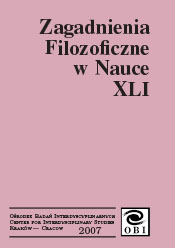S.J. Goulda koncepcja rozłącznych magisteriów nauki i wiary
S.J. Gould's conception of non-overlapping magisteria
Author(s): Justyna HerdaSubject(s): Theology and Religion, Religion and science , Philosophy of Religion, Philosophy of Science
Published by: Copernicus Center Press
Keywords: Stephen Jay Gould; non-overlapping magisteria; science - religion relations; science and religion;
Summary/Abstract: There are many different approaches to the problem of the relation between science and religion. It is often claimed that there exists a conflict between those two domains. However, S. J. Gould cannot see neither how the two enterprises can stay in any conflict nor how they can be reconciled or unified. He developed a concept of two Non-Overlapping Magisteria (NOMA). Gould claims that science and religion are characterized by completely different areas of investigation. The two magisteria ask different questions and provide different explanations. Science investigates the factual character of the natural world while religion explores the world of values, meanings and purposes of human life. One could say that this is a reasonable point of view, but at a closer glance it does not seem to be a satisfactory solution.
Journal: Zagadnienia Filozoficzne w Nauce
- Issue Year: 2007
- Issue No: 41
- Page Range: 46-55
- Page Count: 10
- Language: Polish

